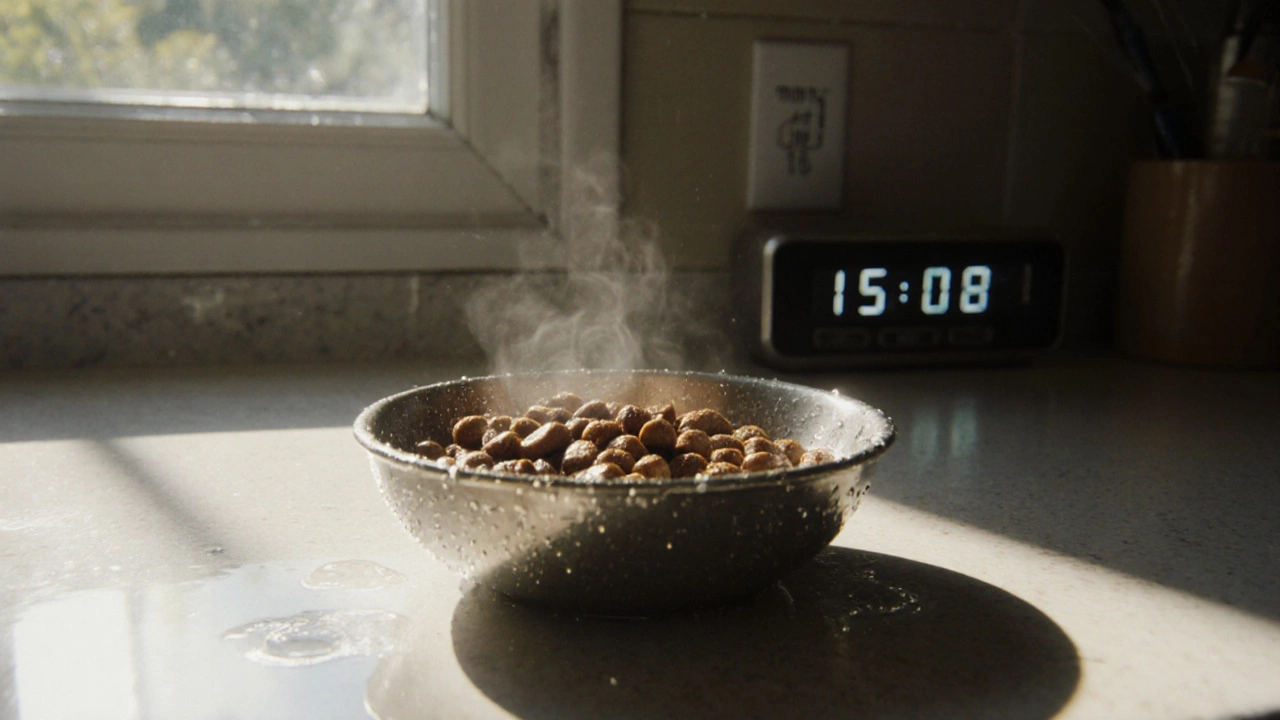Wet Cat Food Spoil: How to Tell, Prevent, and Keep Your Cat Safe
When you open a can of wet cat food, a moist, ready-to-eat form of cat nutrition typically packed in cans or trays. Also known as canned cat food, it's designed to mimic a cat's natural diet with high moisture and protein. But here’s the thing: wet cat food doesn’t last long once it’s open. If left out too long, it can spoil fast—putting your cat’s health at risk. Unlike dry kibble, which stays stable for weeks, wet food starts breaking down within hours, especially in warm kitchens or near sunny windows.
So how do you know if it’s gone bad? Smell is your first clue. Spoiled wet cat food often smells sour, rancid, or just plain off—not just fishy, but like something rotting. Look for mold, discoloration, or a slimy texture. Even if it looks fine, if it’s been sitting out for more than 4 hours, toss it. Cats have sensitive stomachs, and eating spoiled food can lead to vomiting, diarrhea, or worse. Storing opened cans in the fridge helps, but even then, use them within 2-3 days. Always seal them tightly with a pet-safe lid or plastic wrap. And never leave food in the original can—metal can react with the food over time, changing taste and safety.
Another thing to watch: the expiration date on the can. That’s not just a suggestion. Manufacturers test shelf life under ideal conditions, but once opened, the clock starts ticking faster. Keep unopened cans in a cool, dry place—not the garage or under the sink where temperature swings happen. If your cat suddenly turns up their nose at a food they used to love, don’t assume they’re picky. It might be going bad. Always check the smell and texture before serving.
There’s also a big difference between spoilage and oxidation. Wet food can lose its smell or change color slightly due to air exposure, but that doesn’t always mean it’s unsafe. Spoilage means bacteria have grown. That’s the real danger. If you’re ever unsure, it’s better to throw it out. A new can costs less than a vet bill.
Many cat owners worry about waste—buying smaller portions, refrigerating leftovers, feeding multiple small meals a day. These aren’t just habits; they’re smart practices for keeping your cat healthy. And if you’re using wet food to help with hydration—especially for cats with kidney issues—keeping it fresh matters even more. Dehydration can sneak up fast, and spoiled food makes it worse.
Below, you’ll find real, practical advice from pet owners and vets on how to handle wet cat food safely. You’ll learn how to spot spoilage before it’s too late, what storage tricks actually work, and how to avoid common mistakes that put your cat at risk. No fluff. Just what you need to know to keep your cat fed, happy, and safe.
How Quickly Does Wet Cat Food Spoil? Shelf Life and Safety Tips
Wet cat food spoils quickly-often within 1 to 2 hours at room temperature. Learn how long it lasts in the fridge, how to store it safely, and what to do if your cat eats spoiled food.
